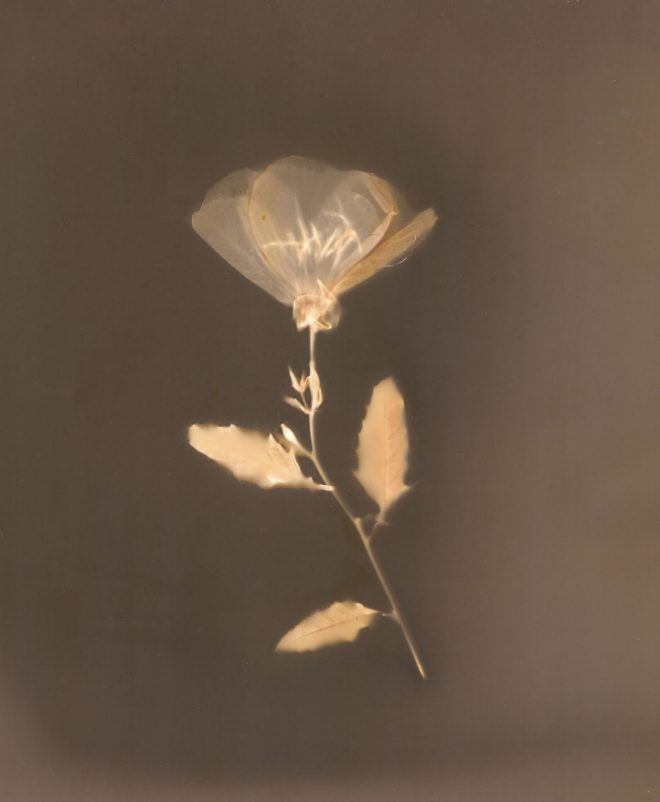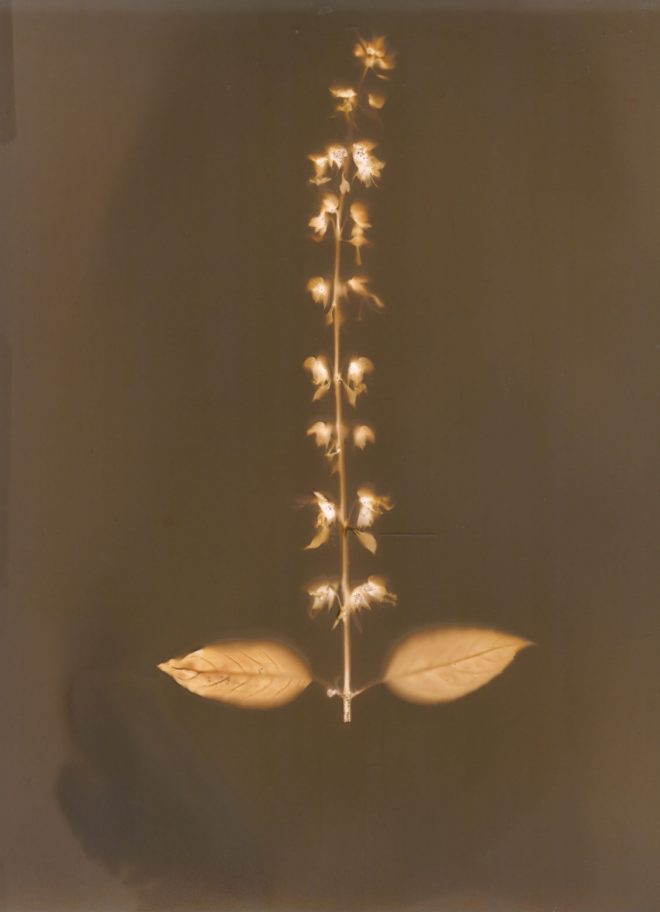Natural X-Rays: Natasha Sanchez at Ochsner Imaging Center
Benjamin Morris considers the role of art in medical facilities and looks at Natasha Sanchez’s lumen prints, now on view at Ochsner Imaging Center.

Natasha Sanchez, Buttercup, 2010. Lumen print. Courtesy the artist.
While medicine is often described as both a science and an art, until recently the modern medical field and the art world have seemingly had little to say directly to one another. Yet with the rise of medical humanities over the past generation, hospitals and clinics have increasingly become sites of engagement that cross disciplinary bounds. Narrative therapy, musical performances in treatment spaces, and art therapy have all contributed to more holistic definitions of wellness than were once available in Western medicine.
Earlier this year, an art-placement program at Ochsner Health System expanded this approach in New Orleans, with the installation of photographer Natasha Sanchez’s works at the new Ochsner Imaging Center in Jefferson. Chosen by medical staff, Sanchez’s prints now adorn the corridors, waiting areas, and examination rooms of this clinic; the pairing of art and location expertly matches historic and contemporary imaging technology.
Sanchez’s prints—known variously as photogenic drawings, lumen prints, or solar photograms—recruit the rays of the sun to inscribe figures onto light-sensitive paper, in a manner that echoes the earliest photographic experiments conducted by the pioneer William Henry Fox Talbot, whose work preceded the more commonly-known daguerreotype. Working primarily with Louisiana flora pressed underneath panes of glass, Sanchez leaves her plates outside until the sun has suitably exposed the image, then uses a traditional chemical fixer. She manipulates the type of paper, the kind of emulsion, and the intensity of solar exposure to create ghostly yet detailed recordings of her subjects.

Natasha Sanchez, Basil Flower Stalk, 2017. Lumen print. Courtesy the artist.
The result is a series of lumen prints, or what Sanchez calls “natural x-rays,” images whose subjects—gladioli, angel’s trumpets, ferns, and lilies—enjoy a soft, smoky texture, but whose structures still remain clearly visible. In a print of buttercups, for instance, the pistils appear bright and prominent within the petals; in another print of basil adorning the center’s main hallway, the plant’s long spindly stalk with young flowers sprouting out of either side looks eerily like a human spine complete with vertebrae. Other images there such as an azalea, an elephant ear, and a camellia resemble other human organs such as hearts and kidneys, the same body parts being scanned in the rooms next door.
While the long-term effects of artwork in clinics are still being studied, the hope is that art in such unexpected places can serve as a calming, reassuring presence, reducing anxiety and creating a more peaceful environment for what might be uncomfortable procedures. Artworks frequently on display in hospitals and clinics offer abstractions or generic landscapes, images intended to remove the viewer’s consciousness from the clinical setting, helping them forget their surroundings. Yet these lumen prints, however, seek the opposite: By invoking historic imaging practices in a modern setting, they seek to metaphorically illustrate the power of medical imaging to reveal, to diagnose, and ultimately to treat.
Peering into hidden structures has long been a goal of both art and medicine; Sanchez says that she created these works with healing in mind, both inviting a sense of wonder and discovery at the body but also reassuring patients that the practice of seeing deep into organic matter has never been more developed than now. How grateful those patients may be, then, not just to appreciate the mystery of such ethereal images, but to know that the process of revelation that brings them beauty is a counterpart to one that can bring them healing.
Editor's Note
Work by Natasha Sanchez is currently installed at Ochsner Imaging Center (1601 Jefferson Highway) in Jefferson, Louisiana. Given privacy regulations, not all prints are accessible to the public, though several are on view in public waiting areas.



